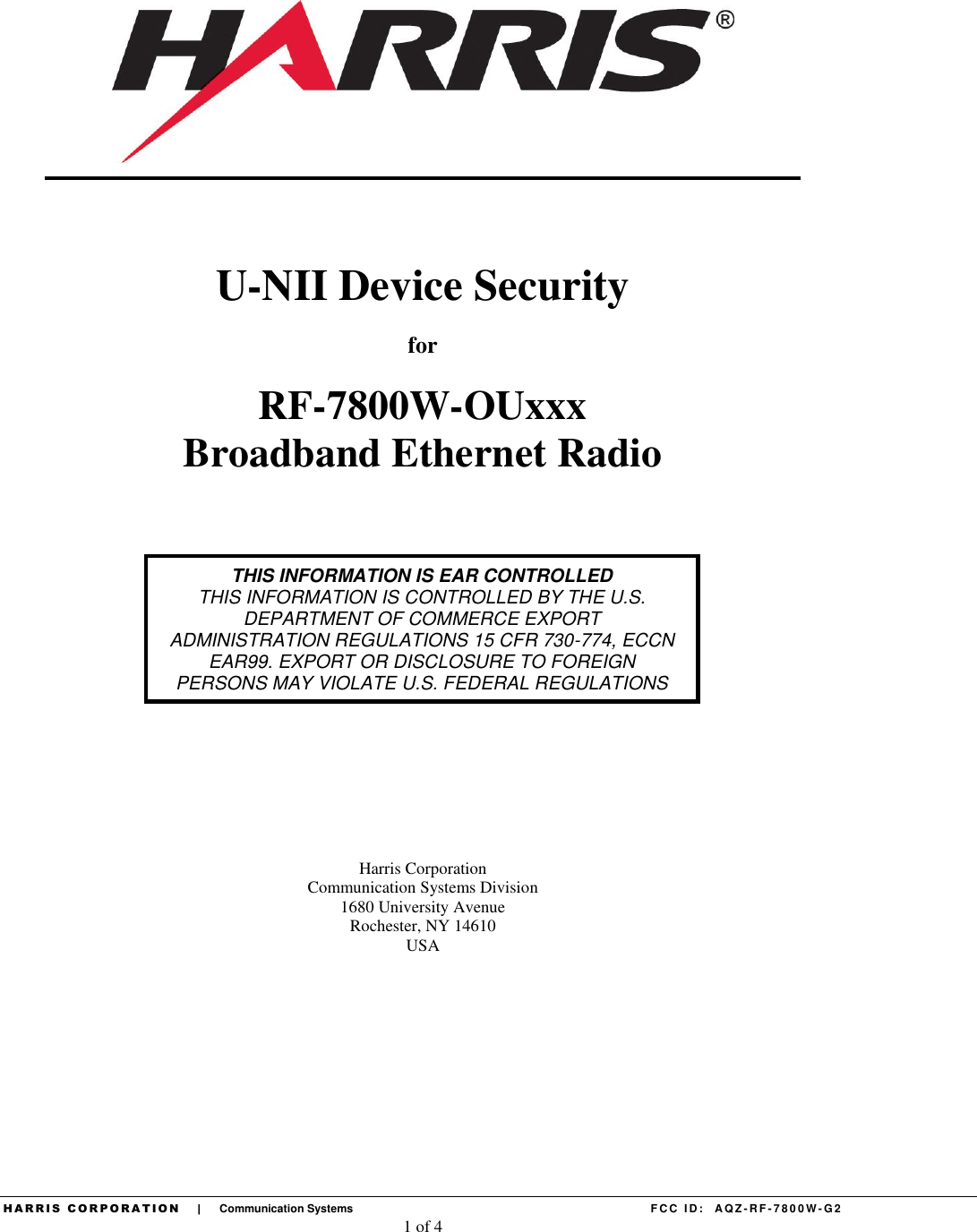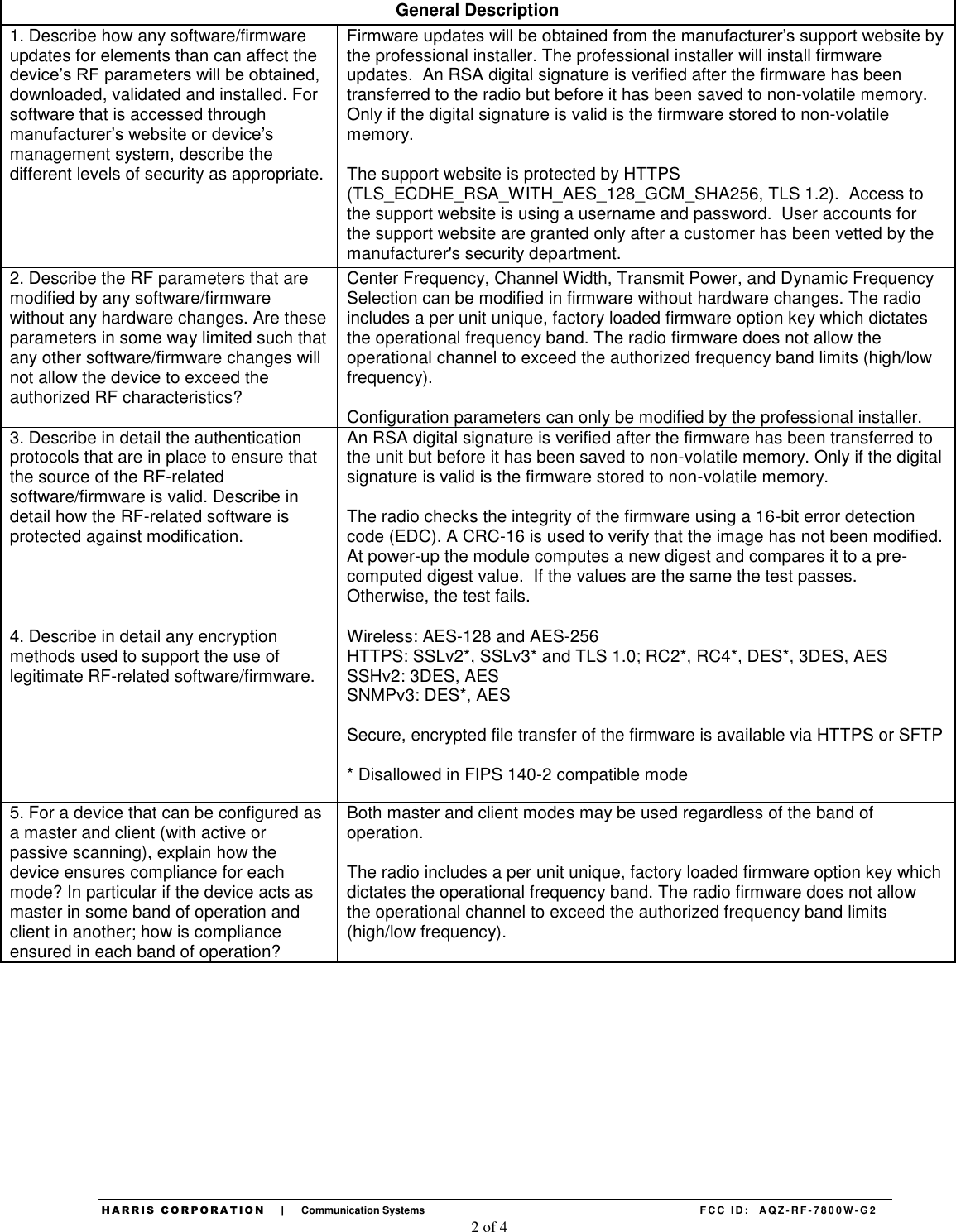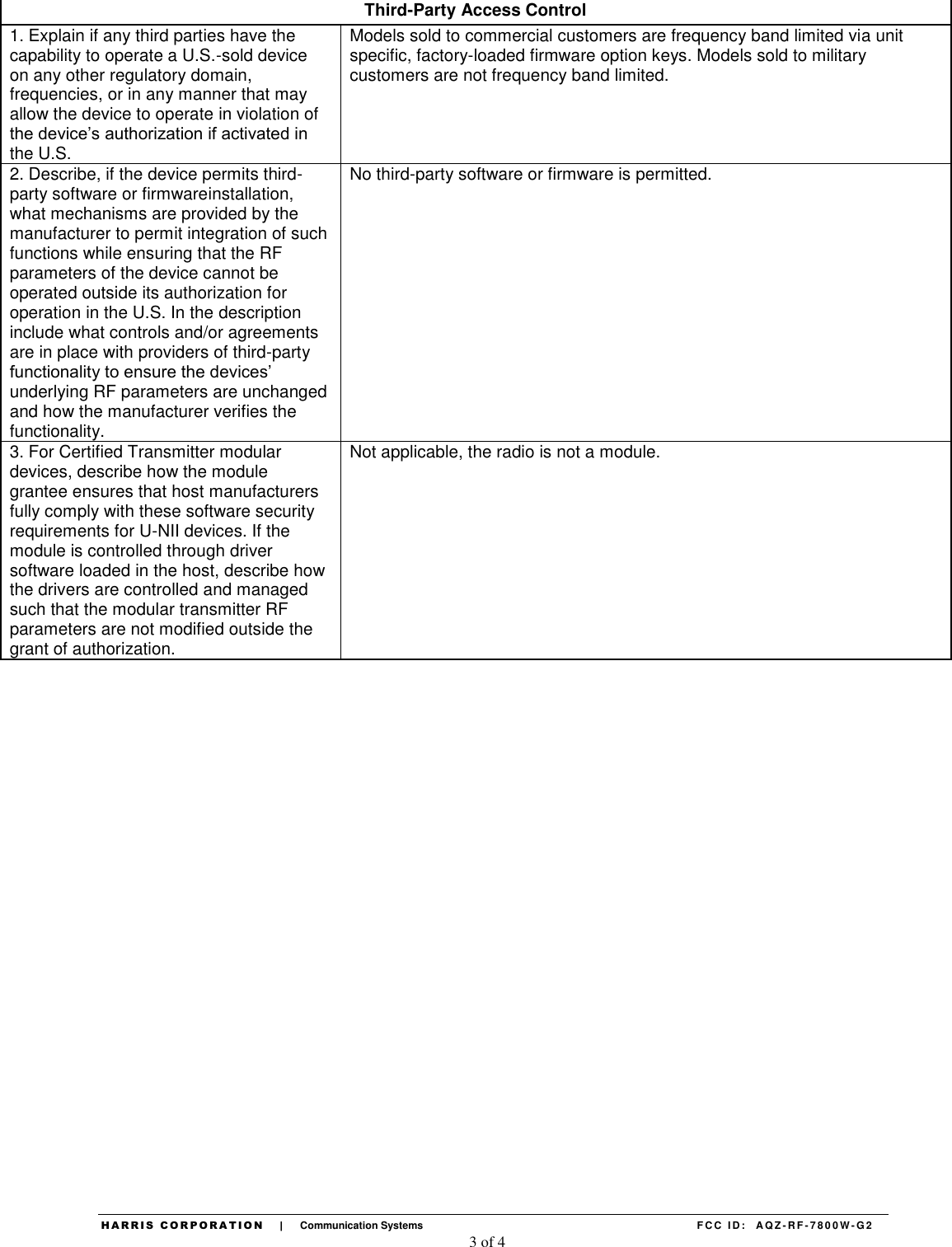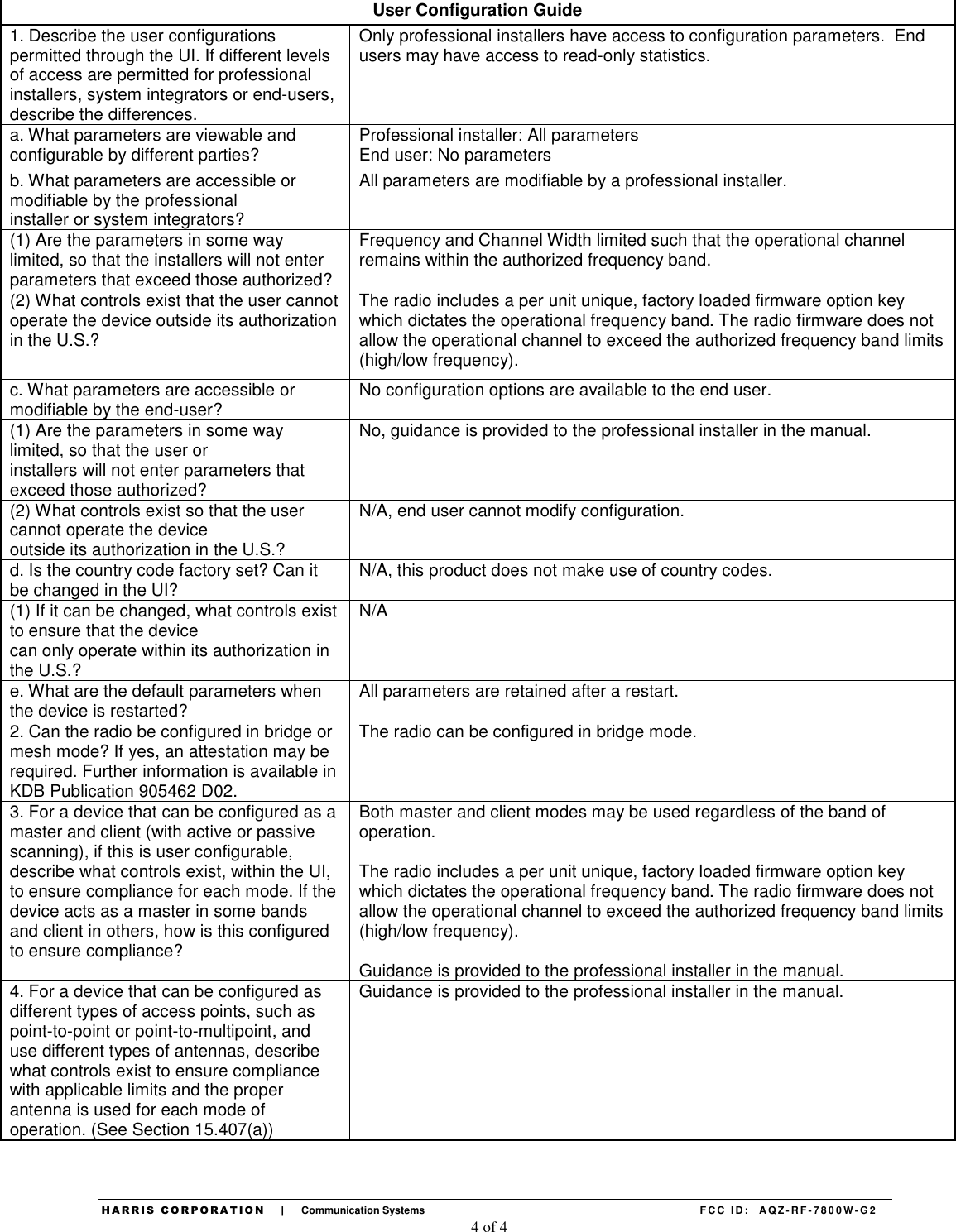Harris RF Communications Division RF-7800W-G2 The device is to be used in fixed and nomadic infrastructure for Ethernet data backhaul. User Manual Draft
Harris Corporation RF Communications Division The device is to be used in fixed and nomadic infrastructure for Ethernet data backhaul. Draft
Contents
- 1. User Manual Draft
- 2. Revised User Manual - Draft
User Manual Draft



